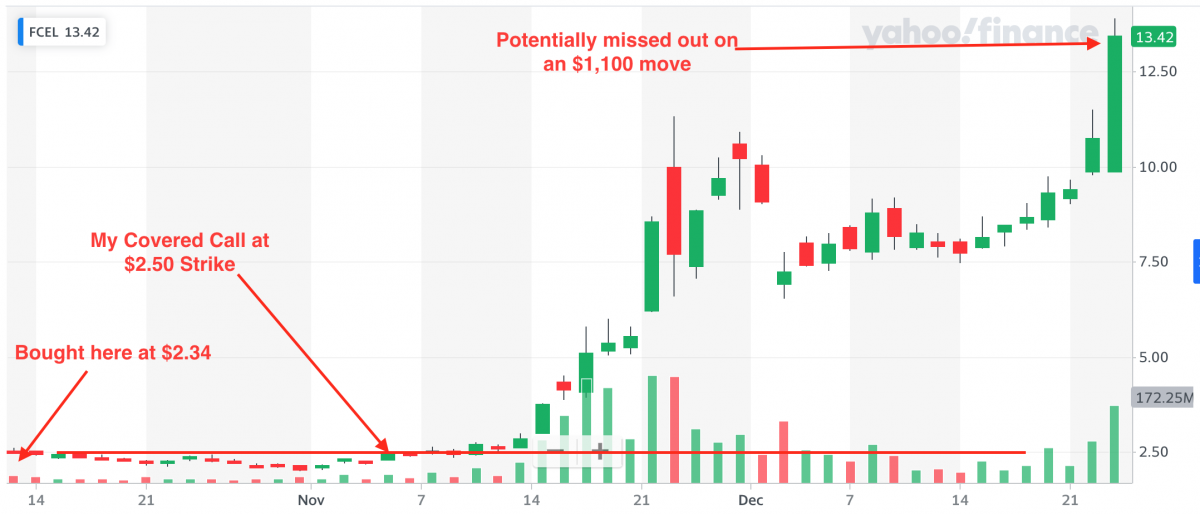According to this article (which I found via googling, “picking up pennies in front of a steamroller”, so take it with a grain of asphalt…), “The term `picking up pennies in front of a steamroller’ is linked to Nassim Taleb, an acclaimed author on randomness and risk, whose books describe an investment strategy that has a high probability to yield a small return (pennies), and a small probability of a very large loss (steamroller).”
I didn’t look further into what specific types of investments Taleb wrote about, but one clear example, at least through the lens of this blog, is writing puts and calls in options trading. We are collecting “pennies” at high probabilities, but once in a blue moon the “steamroller” is going to sneak up on us. Will all the pennies be worth it? Well, that of course depends on how shiny those pennies are and how many you pick up.
Let me tell you about how I just got steamrolled by over $1,100 while picking up $55 worth of pennies. The steamroller was $FCEL. I opened a position on FuelCell Energy on October 8 by purchasing 100 shares at $2.34. I then went on to sell multiple covered calls over the next couple of months at the $2 and $2.50 strikes, proudly picking up $10 to $15 at a time. With a $234 initial investment, each of those premiums represented a 4-7% return!
Things were looking just fine until mid November when the stock price shot up, way past my strike price. The price eventually reached over $10 (and over $13 today)! Had I not had that covered call position at $2.50 strike expiring December 18, I would have been up almost $800. A 336% return! Instead, I got my $55 worth of premiums and $16 in capital gains… a ~30% return.
Lesson Learned?
Well, the short answer is no, I didn’t learn a lesson here. I am still selling covered calls on positions. There is one thing I might do differently with these types of positions in the future.
$FCEL was a pretty speculative play. In fact, my original covered call was an in the money call at the $2 strike. I expected to make about a 6% return after selling for a capital loss and be done with it. I didn’t know if it was going to go up, down or sideways.
In the future, if I’m in a similar speculative play, I could potentially participate in the upside by buying “protection”: buying a cheap, long call at a strike price way out of the money. This would make my covered call a call credit spread. For example, if I had bought a call at the $4 strike, it probably would have only cost me a couple bucks. Sure, my return if the contract expires out of the money would have been those couple dollars less, but I could then have participated in the upside a bit. In this case, if I had a long $4 Call position, that would have been worth over $600 when the stock rocketed up past $10!
Remember, as an option seller you are playing the part of the insurance company selling insurance (put writing), or in this case, the casino (call writing). Sometimes, the gambler is going to win big. That’s OK. In the end, however, the house always wins.
Disclaimer: I am not a financial advisor. This is not investment advice. Please do your own research before investing in anything discussed herein.

One thought on “Picking Up Pennies In Front of a Steamroller: Covered Call on $FCEL”